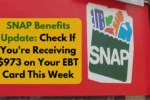Bitcoin (BTC) reached an all-time high of $103,332 on December 4, driven by several key factors: the approval of the first spot price ETFs in January, its halving event in April, the reduction of mining rewards, interest rate cuts, and the crypto-friendly policies of President-elect Trump. As of now, Bitcoin’s price has dipped to around $97,000, though it remains up over 120% in the last year. With a market cap of $1.93 trillion, it remains the top cryptocurrency and the seventh most valuable asset globally.
While Bitcoin continues to be a strong long-term investment in the cryptocurrency market, it may have less room for growth compared to smaller coins. One potential contender is Solana (SOL), which trades around $190 with a market capitalization of $90 billion. But what sets Solana apart from Bitcoin?
How Solana Differs from Bitcoin
Solana uses a proof of stake (PoS) validation method, which eliminates the need for resource-intensive mining. This makes it faster and more energy-efficient than Bitcoin, which relies on proof of work (PoW) for token mining. While PoW blockchains are designed primarily for mining new tokens, PoS blockchains support additional functionality, including decentralized apps (dApps), games, non-fungible tokens (NFTs), and other digital assets. Furthermore, PoS tokens can be staked to earn rewards, offering investors an additional incentive.
Bitcoin is often valued based on its scarcity, with a capped supply of 21 million tokens and nearly 20 million already mined. The last Bitcoin is projected to be mined by 2140, akin to precious metals like gold. Solana, on the other hand, has nearly 591 million tokens in circulation, with no fixed supply limit. However, its annual inflation rate of 4.83% is expected to decrease by 15% each “epoch year” (roughly every 450-630 days).
Solana’s Edge Over Other PoS Tokens
While Ethereum (ETH), the second-largest cryptocurrency and a leading PoS blockchain, often overshadows Solana, the latter offers several advantages. Ethereum supports a wide range of smaller PoS tokens, including Shiba Inu, Polygon, and Render, but its blockchain suffers from speed limitations. In contrast, Solana utilizes a unique proof-of-history (PoH) mechanism to significantly increase transaction speed. Solana’s blockchain can process transactions around 46 times faster than Ethereum, and it has only tapped into less than 2% of its theoretical maximum speed.
Solana’s blockchain speed has attracted numerous developers and partners. It supports meme coins such as BONK and WIF, powers decentralized exchanges like Jupiter and Orca, and facilitates stablecoin transactions for companies like Visa, PayPal, and Circle. Additionally, Solana has integrated its payment protocol, Solana Pay, into platforms like Shopify. In 2023, Solana even launched the Saga Phone, an Android smartphone designed for Web3 apps, offering an alternative to Google Play with its own dApps Store.
Despite its promising features, Solana faced network congestion, spam transactions, and security challenges over the past two years. Its connection with the collapsed FTX exchange, which liquidated its tokens at a discount to repay creditors, further impacted its value. This, along with rising interest rates, caused its price to fall below $10 in December 2022.



